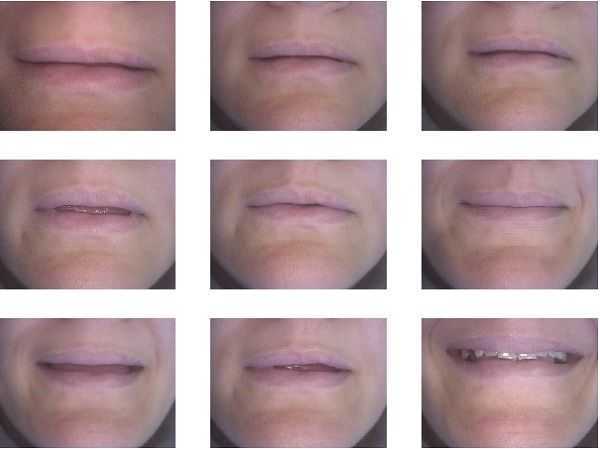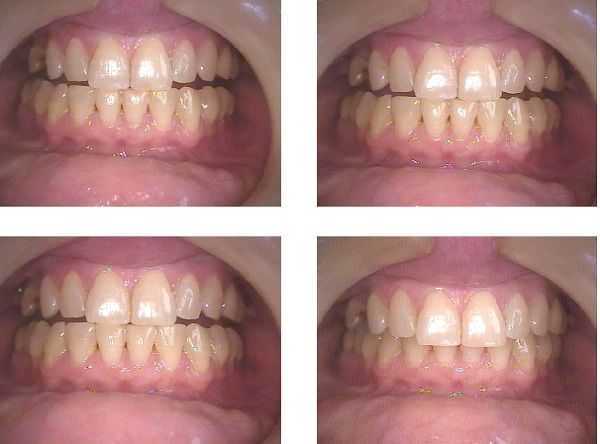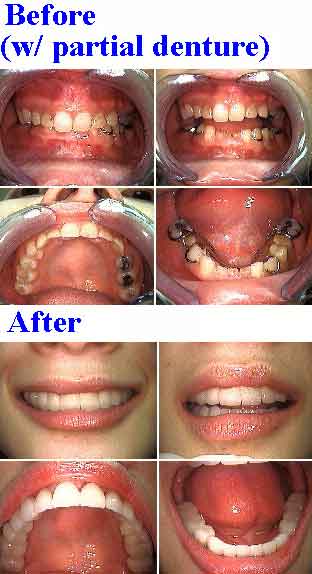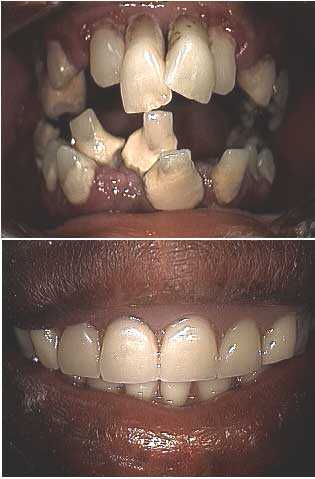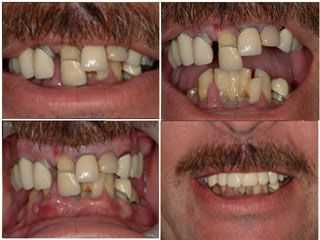Before and after photos on a collapsed bite or closed bite may cause malocclusion performed in our Braces Orthodontics office.
This patient does not show her upper front teeth as she speaks. This is because she exhibits a closed bite. Treatment options include orthognathic surgery or cosmetic dentistry using porcelain onlays on the upper back teeth and porcelain veneers on the upper front teeth. Image #1 of 2
This patient has a closed bite. The first three pictures show her comfortable stopping point when asked to close her teeth. The last picture shows how much more she has to close to completely close her teeth. Treatment should involve an examination of her TMJ, temporomandibular joint. Bite plate therapy should be considered before changing her bite with porcelain. Image #2 of 2.
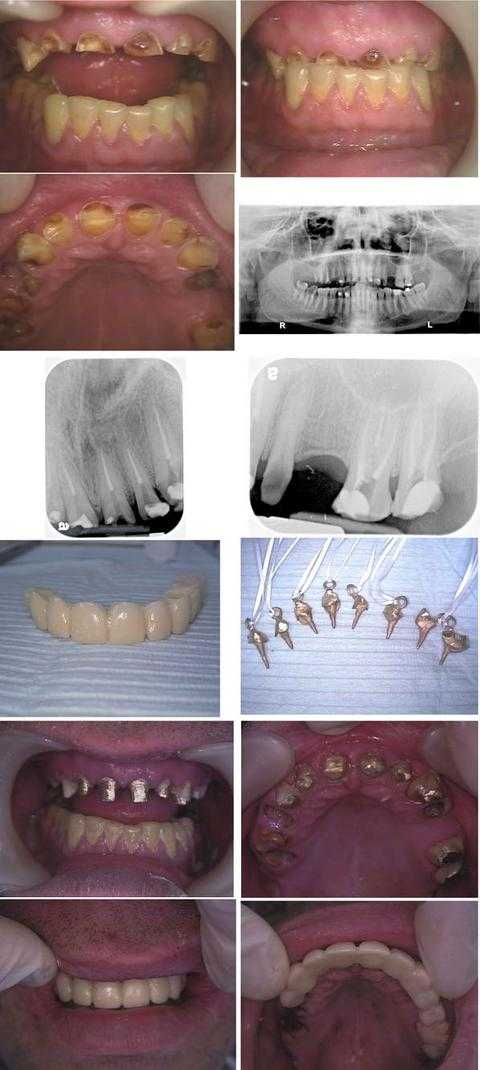
Dental Rehabilitation smile makeover of a phobic Wall Street executive with a collapsed teeth bite or closed bite. Total treatment time was about nine hours in two visits during one business week: Monday (four hours) and Friday (five hours). This patient hid his dental condition for over a decade by never smiling.
In the first row of photos, note that the bite was over-closed due to a prior history of an eating disorder, now controlled, and a current tooth grinding habit that resulted in a collapsed bite.
An Oral Surgery consultation with panoramic x-ray (second row) was performed prior to treatment to evaluate opening the bite.
The third row shows x-rays taken after the Endodontist completed eight root canals on the first day on tooth #’s: 6 – 11 and 14, 15.
The fourth row shows the lab-processed 11 unit (11 tooth) temporary bridge and the cast gold post/cores (with Kaitlyn loops) for the root canal treated teeth.
The fifth row shows the cast gold post/cores cemented.
The sixth row shows the lab-processed temporary bridge in place after the surgeon extracted tooth #’s: 3 – 5 and 12, crown lengthening gum surgery was performed on tooth #’s: 6 – 11, and a distal wedge was performed on #15.
The patient will have a final porcelain-metal bridge made after the gums heal. Implants may also be placed in the upper right posterior. A bite plate is also necessary to try to mitigate the force of tooth grinding. Referral for pharmacological management of anxiety is also worthwhile.
Porcelain Full Mouth Oral Reconstruction. This 30 year old female who had many genetically missing adult teeth called partial anodontia, retained baby teeth and a collapsed teeth or closed bite.
Full mouth reconstruction of a a collapsed teeth bite that resulted in a severe dental malocclusion. This 36 year-old female suffered from dental fear phobia. Before and after smile makeover pictures: two visits. Photo #1 of 2.
Full mouth reconstruction of a collapsed bite in a phobic 36 year-old female. Initial visit. It is important to determine what teeth, if any, may be saved at least temporarily while figuring out how to restore a stable occlusion. It is easier for a patient to emotionally adjust to a temporary prosthesis that has at least some amount of retention provided by natural tooth abutments. The teeth chosen were #6, 11, 22 and 28. The decision to fabricate a removable immediate partial denture, rather than a fixed lab-processed temporary bridge, was determined by the particular weakness of tooth #28. The patient was informed that the immediate prosthesis was to be used for the healing phase and that the four remaining abutments, particularly #28, might be subsequently extracted. Photo #2 of 2.
Oral Reconstruction involving treatment of a collapsed bite dental malocclusion. This dentistry involved the reestablishment of a stable occlusion and was performed by a Columbia University dental student in our office. The student, Jared Bowyer, is part of a unique honors program at Columbia.
